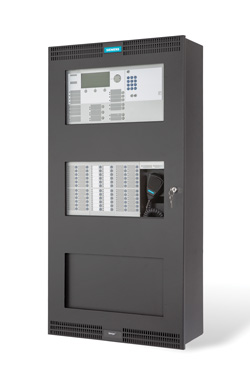 Technology has advanced the fire alarm industry from blaring horn strobes to intelligent voice communication. The trend is to provide more information and give directions, replacing the traditional “make a lot of noise and flash some lights to drive everybody away from the fire,” says David Burns, production manager with Siemens, a multifaceted engineering company.
Technology has advanced the fire alarm industry from blaring horn strobes to intelligent voice communication. The trend is to provide more information and give directions, replacing the traditional “make a lot of noise and flash some lights to drive everybody away from the fire,” says David Burns, production manager with Siemens, a multifaceted engineering company.
A key technological advance is intelligibility — the ability of occupants to understand the message. Acoustics play a huge part in this; in rooms with a concrete floor and no softening wall or window treatments, broadcast sound reflects and becomes distorted. So a critical requirement in the code is an evaluation of the facility. Intelligibility may be better with, for instance, lower volume and more speakers, also adjusting the direction of the speaker output so the emissions don’t overlap.
Another valuable advance affects transmission of the signals. Past technology did not support multiple messages; now, systems are configurable so different messages can be broadcast to different areas. If a hazardous event happens in one section of a building or campus, occupants there can be given evacuation directions, while other areas can be sent a message to “stay where you are; the hazardous event is in another area. Further information will follow.”
Systems using voice communication have been required in high-rise-type office buildings, but code authorities are now recognizing the need to expand their use, according to Burns. “They’re seeing the effect — occupants in buildings with voice communication systems are three times more likely to evacuate safely,” he says. “With emergency voice communication, we can direct people to certain areas and away from a hazard.” He notes systems can fit any market need, from a small elementary school to the Empire State Building.













Speak Your Mind
You must be logged in to post a comment.